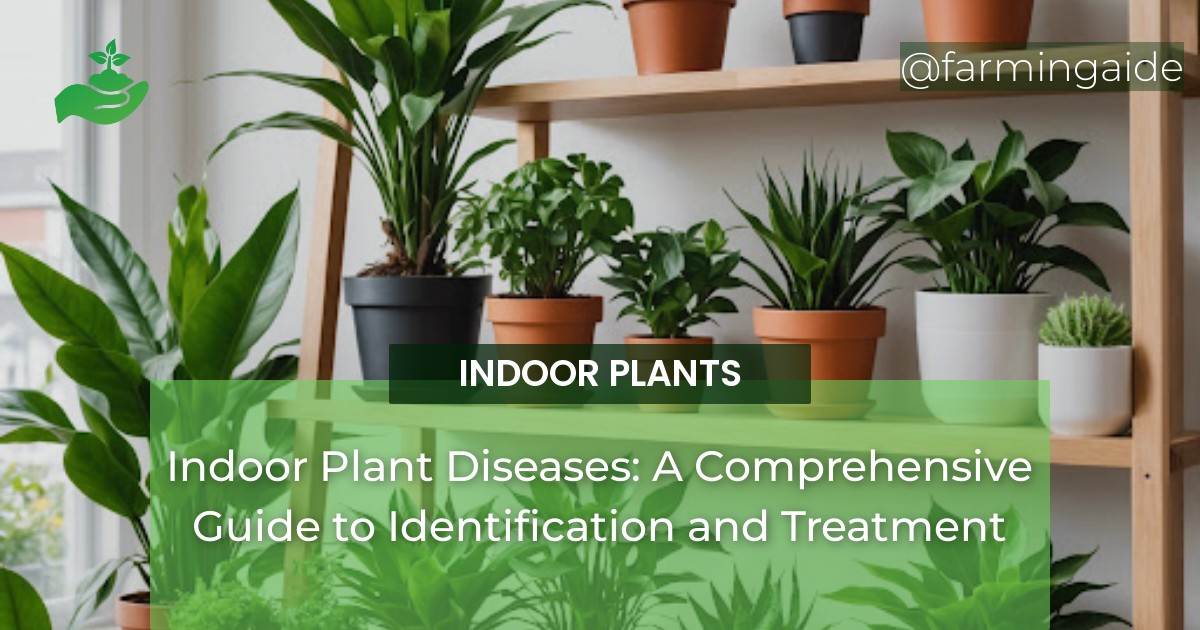Are you tired of watching your beloved indoor plants wither away due to mysterious diseases? Do you struggle to identify the symptoms and find effective treatments? You’re not alone. Indoor plant diseases can be a frustrating and daunting problem for many plant enthusiasts. However, with the right knowledge and strategies, you can identify, treat, and prevent these diseases, ensuring your indoor garden remains healthy and thriving. In this comprehensive guide, we’ll delve into the world of indoor plant diseases, exploring the common types, identifying symptoms, effective treatment strategies, and preventative measures to keep your plants healthy and disease-free.
Key Takeaways
- Understanding common indoor plant diseases is crucial for effective treatment and prevention.
- Identifying symptoms early on can make all the difference in saving your plants.
- A combination of chemical and organic treatments can be effective in combating diseases.
- Environmental adjustments and good plant care practices are essential for disease prevention.
- Regular monitoring and maintenance are key to maintaining a disease-free indoor garden.
Understanding Common Indoor Plant Diseases
Indoor plants are susceptible to various diseases caused by fungi, bacteria, and viruses. Understanding the different types of diseases is essential for effective identification and treatment.
Fungal diseases, such as root rot and leaf spot, are common in indoor plants. Bacterial infections, like bacterial leaf spot and crown gall, can also affect plants. Viral diseases, although less common, can still cause significant damage to plants.
Fungal Diseases in Indoor Plants
Fungal diseases are often caused by overwatering, poor air circulation, and high humidity. They can cause a range of symptoms, including leaf spotting, root rot, and stem cankers.
Fungal diseases can be treated with fungicides, improved air circulation, and reduced watering. Preventing fungal diseases requires good plant care practices, such as proper watering and pruning.
Bacterial Infections in Houseplants
Bacterial infections can cause a range of symptoms, including leaf spotting, blights, and cankers. They are often caused by contaminated water, pruning tools, and infected soil.
Bacterial infections can be treated with bactericides, improved air circulation, and reduced watering. Preventing bacterial infections requires good plant care practices, such as proper watering and pruning.
ALSO READ
Viral Diseases Affecting Indoor Greenery
Viral diseases, such as tobacco mosaic virus and tomato spotted wilt virus, can cause a range of symptoms, including yellowing leaves, stunted growth, and distorted leaves.
Viral diseases are often spread through contaminated sap, insects, and contaminated tools. There is no cure for viral diseases, so prevention is key.
Identifying Symptoms of Plant Diseases
Identifying symptoms of plant diseases early on is crucial for effective treatment and prevention. Common symptoms of plant diseases include leaf spotting and discoloration, wilting and stunted growth, and root rot and mold growth.
Leaf Spotting and Discoloration
Leaf spotting and discoloration can be caused by fungal, bacterial, or viral diseases. It’s essential to identify the underlying cause to provide effective treatment.
Leaf spotting and discoloration can be treated with fungicides, bactericides, or viral treatments, depending on the underlying cause.
ALSO READ
Wilting and Stunted Growth
Wilting and stunted growth can be caused by root rot, fungal diseases, or viral diseases. It’s essential to identify the underlying cause to provide effective treatment.
Wilting and stunted growth can be treated with fungicides, bactericides, or viral treatments, depending on the underlying cause.
Root Rot and Mold Growth
Root rot and mold growth can be caused by overwatering, poor air circulation, and high humidity. It’s essential to improve air circulation, reduce watering, and treat with fungicides.
Root rot and mold growth can be prevented by good plant care practices, such as proper watering and pruning.
Effective Treatment Strategies for Indoor Plant Diseases
Effective treatment of indoor plant diseases requires a combination of chemical and organic treatments, pruning and disinfecting affected areas, and environmental adjustments.
Chemical vs. Organic Treatments
Chemical treatments, such as fungicides and bactericides, can be effective in combating diseases. However, they can also harm beneficial microorganisms and the environment. Organic treatments, such as neem oil and cinnamon, can be a safer alternative.
A combination of chemical and organic treatments can be effective in combating diseases.
Pruning and Disinfecting Affected Areas
Pruning and disinfecting affected areas can help prevent the spread of diseases. It’s essential to disinfect pruning tools and remove infected plant material.
Pruning and disinfecting affected areas can help prevent the spread of diseases and promote healthy growth.
Environmental Adjustments for Disease Prevention
Environmental adjustments, such as improved air circulation, reduced watering, and optimal lighting, can help prevent diseases.
Environmental adjustments can help prevent diseases and promote healthy growth.
Preventative Measures to Keep Your Indoor Plants Healthy
Preventing diseases is key to maintaining a healthy indoor garden. Good plant care practices, such as proper watering, pruning, and fertilization, are essential.
Proper Watering Techniques
Proper watering techniques, such as avoiding overwatering and allowing the soil to dry slightly between waterings, can help prevent diseases.
Proper watering techniques can help prevent diseases and promote healthy growth.
Optimal Lighting Conditions
Optimal lighting conditions, such as providing sufficient light and avoiding direct sunlight, can help promote healthy growth.
Optimal lighting conditions can help promote healthy growth and prevent diseases.
Balanced Nutrient Supply
A balanced nutrient supply, such as providing essential macronutrients and micronutrients, can help promote healthy growth.
A balanced nutrient supply can help promote healthy growth and prevent diseases.
Conclusion: Maintaining a Disease-Free Indoor Garden
Maintaining a disease-free indoor garden requires a combination of understanding common indoor plant diseases, identifying symptoms early on, and implementing effective treatment strategies and preventative measures.
By following the guidelines outlined in this comprehensive guide, you can keep your indoor plants healthy, thriving, and disease-free.


